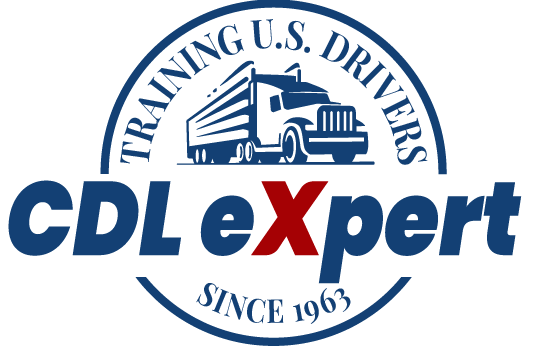Mastering Your Post-Trip Inspection: A Step-by-Step Guide for Aspiring CDL Drivers
- Emily Parker
- Dec 16, 2024
- 3 min read
A post-trip inspection is an essential safety check every commercial driver performs at the end of their shift. It helps identify vehicle issues that need fixing before the next trip, ensuring compliance with DOT regulations and keeping you safe on the road. This article walks you through the inspection process, explains its importance, and provides practical tips to integrate it into your routine.
Why Post-Trip Inspections Matter
The Department of Transportation (DOT) mandates post-trip inspections to ensure the safety of drivers, passengers, and cargo. A thorough post-trip inspection helps:
Detect potential mechanical problems early, avoiding costly repairs and downtime.
Maintain compliance with Hours of Service (HOS) regulations and DOT requirements.
Enhance safety by addressing issues like tire wear, brake conditions, and light malfunctions.
For new CDL drivers, learning this process is critical, as it builds a habit of diligence and responsibility.
Preparing for the Inspection
Know the Requirements: According to federal regulations, drivers must complete a Driver Vehicle Inspection Report (DVIR) at the end of their shift. This document lists any issues found during the inspection.
Use a Checklist: Using a standardized checklist ensures you don’t miss critical components. Most CDL training programs, including ours at CDL eXpert, provide these resources to trainees.
Stay Equipped: Equip yourself with a flashlight, gloves, and a tire pressure gauge to make the inspection thorough and efficient.
Step-by-Step Guide to Performing a Post-Trip Inspection
1. Begin with the ExteriorWalk around the vehicle and inspect the following components:
Lights and Reflectors: Check that all lights (headlights, brake lights, and turn signals) are functional and visible.
Tires and Wheels: Look for proper inflation, tread depth, and signs of wear or damage. Verify that the lug nuts are secure.
Brakes: Inspect air hoses and brake components for leaks or wear.
Undercarriage: Ensure there are no leaks, cracks, or loose parts in the undercarriage.
2. Inspect the Engine AreaPop the hood and examine:
Fluids: Check oil, coolant, and windshield washer fluid levels.
Belts and Hoses: Look for cracks, frays, or leaks.
Battery: Ensure terminals are clean and connections are secure.
3. Interior InspectionEnter the cab and evaluate:
Dashboard Indicators: Ensure all gauges and warning lights are operational.
Mirrors and Windows: Verify they are clean and free of cracks or chips.
Horn and Wipers: Test these for functionality.
4. Test the Air Brake SystemIf your vehicle uses air brakes, follow this sequence:
Static Air Pressure Test: With the engine off, monitor pressure loss.
Applied Pressure Test: Apply the brakes and check for excessive air loss.
Low Air Warning System: Confirm the warning activates when pressure drops below the minimum threshold.
5. Secure the CargoIf applicable, inspect the cargo area to ensure items are secure and meet DOT securement standards.
6. Document Your FindingsComplete the DVIR, noting any defects that need immediate attention. Drivers of commercial vehicles are required to submit this report to their motor carrier.
Tips for Success
Practice Makes Perfect: During your CDL training, perform mock inspections to build confidence and precision.
Be Observant: Look for signs of wear or damage that could worsen before the next trip.
Leverage Technology: Some modern fleets use apps to guide inspections and report issues electronically.
How CDL eXpert Helps You Prepare
At CDL eXpert, we prioritize comprehensive training to ensure you master the skills required for commercial driving. Our online Entry-Level Driver Training (ELDT) program covers vehicle inspection protocols, including pre- and post-trip checks.
Why choose CDL eXpert?
Convenience: Access your course 100% online from your phone or computer.
Expert Guidance: Our trainers are seasoned professionals with decades of experience.
Common Post-Trip Inspection FAQs
1. Is a post-trip inspection required after every shift?Yes, DOT regulations mandate drivers to complete a post-trip inspection at the end of each driving day.
2. What happens if defects are found?Defects must be reported immediately and repaired before the vehicle is used again. Your carrier is responsible for ensuring repairs are completed.
3. Can I perform the inspection during my off-duty hours?While inspections are part of your duty time, they can be completed just before transitioning to off-duty status.
Make It Happen!
Embark on a rewarding career in trucking with CDL eXpert! Our expert-led training ensures you not only pass your CDL exam but also excel as a professional driver.
Start your journey today:
Enroll in our comprehensive CDL ELDT program.
Take advantage of scholarships and grants for young adults.
Master vehicle inspections and much more!
Secure your future with CDL eXpert – where expertise meets opportunity.

You may also use this free license plate lookup tool to verify the history of any car before making the purchase.